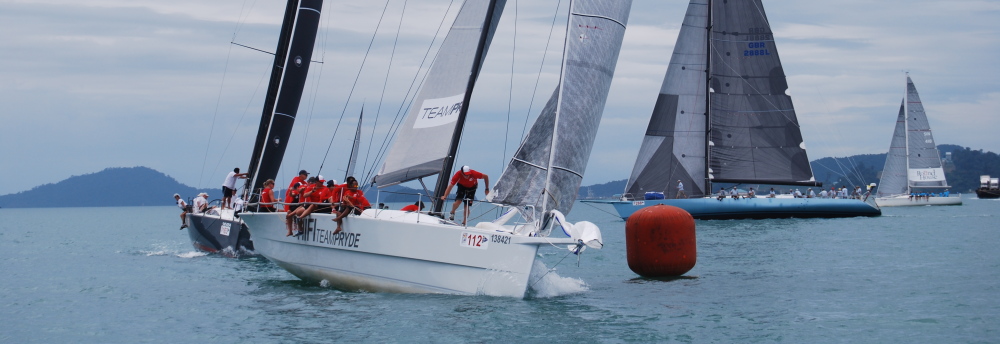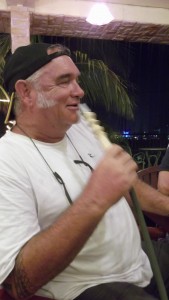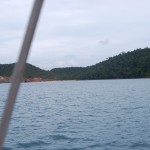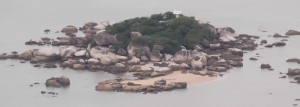With apologies to the real Mr Men
Mr Brash had a big boat and although he was not in the least bit lonely, he liked to have company, so he invited Mr Brainy and Mr Modesty to dine and sleep. As they went along in Mr Brash’s rickety old car, Mr Brainy was still thinking about dummy GPS waypoints, used to track bearing and distance to a real waypoint that is quite different from the dummy. Having difficulty with understanding this? Well so have I, but it was meat and drink to Mr Brainy who behaved outrageously in class, drawing arcane diagrams on the board and taking over from the teacher. Poor Mr Brainy, he had such a lot of trouble holding up his enormous head!
Mr Brash drove his car very gently and skilfully, such that it was a pleasure to be chauffered by him and both Mr Brainy and Mr Modesty got an overwhelming sense of safety and the immense courtesy of Mr Brash, which of course sits at odds with his name and his exterior. Mr Brash is also a biker, and by preference he wears a brief black cutaway Harley Davidson top which shows off his extensive tattoos extending down from his right shoulder to just below the elbow.
Mr Modesty described how he loves his kids to Mr Brainy and Mr Brash. Mr Brainy didn’t listen very well and so he said the first thing that came into his mind.
“A father’s relationship with his son is always closer than to his daugher.” This was a really silly thing for him to have said, and in fact is exactly dead wrong, but Mr Brash was too polite to point this out, but Mr Modesty did say, very mildly, that he had expected it to be the other way around.
They needed to get some food to eat, so they went to the supermarket. Mr Brainy had a rather complicated scheme. He started to calculate how to add to the leftovers from the previous day, but before this plan was complete in his head, Mr Brash had already selected and chosen some chops. Eventually Mr Brainy got himself together and managed to select some rather tired vegetables and some rather green bananas. Mr Modesty was keeping very quiet because he had never been to the boat before and so very wisely decided to let the other two lead. This suited Mr Brainy down to the ground.
By the time Mr Brainy had chosen some vegetables, the other two Mr Men had already been to the liquor store and had bought mixers, beers, and wines. The three met up again after queuing to pay. Then they continued in the rickety old car to the Royal Lankawi Yacht Club where Mr Brash’s enormous ocean-going catamaran was moored. Mr Brash hurried on ahead. Mr Brainy explained about Mr Brash’s super yacht to Mr Modesty. After a little while Mr Modesty told Mr Brainy that he already knew about it. Actually it was not a super yacht but a detail like this was nothing to Mr Brainy, and he took no notice.
Mr Brash had hurried on ahead to make sure that the boat was nicely ventilated for his guests. Mr Brash is very thoughtful and he set about the practical details of cooking the chops and adding a bottle of pasta sauce to the plain macaroni that was left over from the day before last. Mr Brainy offered Mr Modesty a gin and tonic which he did not really want, but he was too polite to tell Mr Brainy. Then Mr Brainy started to teach Mr Modesty some English Literature, and he quoted most of Coleridge’s Kubla Khan so that Mr Modesty would be sure to get the message.
Mr Modesty had learned Shylock’s speech about this jewish man’s common humanity at school, so very politely he unpacked the memory and recited the text, since it seemed that it was the right thing to do. Mr Brainy drummed his fingers while Mr Modesty spoke but even he was moved by some of it – for example
“If you prick us, do we not bleed?”
Quite soon Mr Brash had finished cooking and he came out into the cockpit to serve the food to the other two. They stuffed themselves with the delicious food and Mr Brash and Mr Modesty drank quite a bit of the red wine that they had bought at the supermarket.
After dinner, Mr Brainy went off to write his blog and the other two Mr Men got down to some serious drinking. Mr Modesty started playing pop music on his iPhone, which sounded tinny to Mr Brainy, but instead of blocking off his ears, he got out his iPod and listened to Beethoven. Then he went to bed. The other two fell asleep on the benches in the cockpit and started to snore heavily, so I wasn’t able to observe any more of their behaviour.
During their sleeping periods I began to organise my views about each of the Mr Men and I have summarised them thus: Mr Brash is actually more brainy than Mr Brainy and slightly more modest than Mr Modesty. Mr Modesty is a gentle spirit with a very giving nature, but he has an assertive side and when that side is given free rein, he can be more brash than Mr Brash. Mr Brainy is almost always more brash than Mr Brash, and sometimes less brainy than Mr Modesty.
The next day the three friends were a few minutes late for the start of their class. At this stage they were being taught how to adjust course for leeway and tide. These were the last building blocks in the process of learning how to calculate ‘Course to Steer‘ allowing for these influences in the fluid on which their bark swims.







